
With these books by 30-year MI instructor Barrett Tagliarino you'll make the most of your practice time. You'll learn the important details, how and what to practice (in the right order), saving for later the things you don't need right away. For half the price of a single lesson you can make serious advancement toward a professional level.
If you're not ready to do that, you can click here to subscribe to my youtube channel where I post frequent videos based on content from these books.
Click any Book Cover or Title to Buy
| Guitar Fretboard Workbook: A Complete System for Understanding the Fretboard. The draw/describe/play program teaches you to quickly find every note, scale, chord, and arpeggio in any position with an absolute minimum of memorization, by connecting the sounds to a map of fretboard relationships in your head.
With the system clearly explained in the Guitar Fretboard Workbook, you'll know where notes and scales are at all times, and be able to build and embellish chords on the fly. You'll no longer have to skip over areas of the neck when soloing, resulting in better phrasing, more creative possibilities, and smoother execution overall. Click here to learn more about the Guitar Fretboard Workbook. |
| Chord-Tone Soloing: A Guitarist's Guide to Melodic Soloing in Any Style (Musicians Institute Press/Hal Leonard) covers different territory from the others. Once you know the fretboard, you still have to know which notes to play, and when! This book has been very popular, opening the door to melodic soloing for thousands of players. It's not necessary to read music to use this book, but it helps. |
Rhythmic Lead Guitar: Solo Phrasing, Groove and Timing (Musicians Institute/Hal Leonard)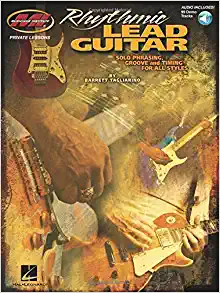
Apply exact timing to bends, slides, legato articulations and grace notes to get your soloing under your complete rhythmic control. No prior music reading knowledge is required, but you will learn a bit about correct rhythmic notation as you go. Over 150 examples are tabbed and notated, and demonstrated at slow tempos in the audio.
Chapters 1-11 set up the basics: counting beats and divisions, playing in time, finding beats, syncopation, pickup phrases, articulations, contributing to the groove, defining phrase length.
Chapters 12-19 cover motific development; form signaling; odd meters; syncopation, displacements, additive rhythms, pedal tones, polyrhythms, and metric modulation.
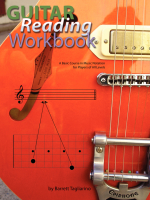 Guitar Reading Workbook. This fun method book arose from Reading classes for beginning GIT students. Concise explanations and diagram exercises similar to those in the Fretboard Workbook let you relate the notes on the reading staff to their fretboard positions. Starts out basic but takes you into some reasonably advanced territory. Early assignments in this book might take about 5 minutes to complete. Later ones can take up to half an hour. The exercises differ from chapter to chapter. Sometimes you just have to write the names of some notes or chords that you see on the staff. In others, you write which beat number a rhythm falls on. Later, you'll read some tab and translate it into regular notation, or look at some notes and identify the chord they make, and so on. When you've finished the written part, you pick up the guitar, turn on the metronome, and play the notation.
Guitar Reading Workbook. This fun method book arose from Reading classes for beginning GIT students. Concise explanations and diagram exercises similar to those in the Fretboard Workbook let you relate the notes on the reading staff to their fretboard positions. Starts out basic but takes you into some reasonably advanced territory. Early assignments in this book might take about 5 minutes to complete. Later ones can take up to half an hour. The exercises differ from chapter to chapter. Sometimes you just have to write the names of some notes or chords that you see on the staff. In others, you write which beat number a rhythm falls on. Later, you'll read some tab and translate it into regular notation, or look at some notes and identify the chord they make, and so on. When you've finished the written part, you pick up the guitar, turn on the metronome, and play the notation.
|
Includes: Alternate, economy, sweep, outside, and inside picking; Precise string damping and muting for clear punchy tone; Anticipating and preventing fingering glitches; Scales, modes, triad and 7th arpeggios with inversions; CAGED system fretboard navigation; Intervallic exercises from 3rds through 7ths, with permutations to keep your fingers and brain improving for years; Developing natural phrasing senses; Breaking down the learning and memorization process; Making sure practice time produces results; Sprint training regimen for efficiently building speed; Examples notated and tabbed with exact picking and fingering.
It starts with basics like the 5 minor and major pentatonic scale patterns, dorian and aeolian modes, and the blues scale. Then we cover soloing techniques: string bending, vibrato, pull-offs, hammer-ons, and slides, along with some finger exercises to break out of the scalar rut. Next are some blues and country licks that cross over into classic rock, with a demonstration of how to use them in major and minor keys. Finally there are phrasing principles using solo excerpts from classic songs, including "Black Magic Woman," Maggie Mae," Already Gone," "La Grange," "Money," "Stairway to Heaven," All Along the Watchtower," and Alvin Lee's "Goin' Home." |
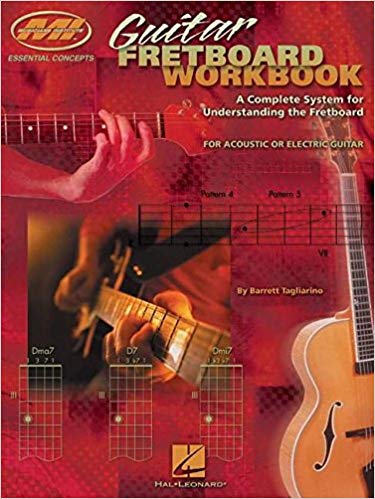
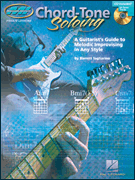
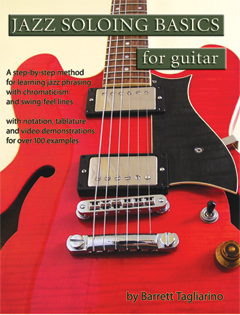 Jazz Soloing Basics for Guitar: A step-by-step method for learning jazz phrasing with chromaticism and swing-feel lines
Jazz Soloing Basics for Guitar: A step-by-step method for learning jazz phrasing with chromaticism and swing-feel lines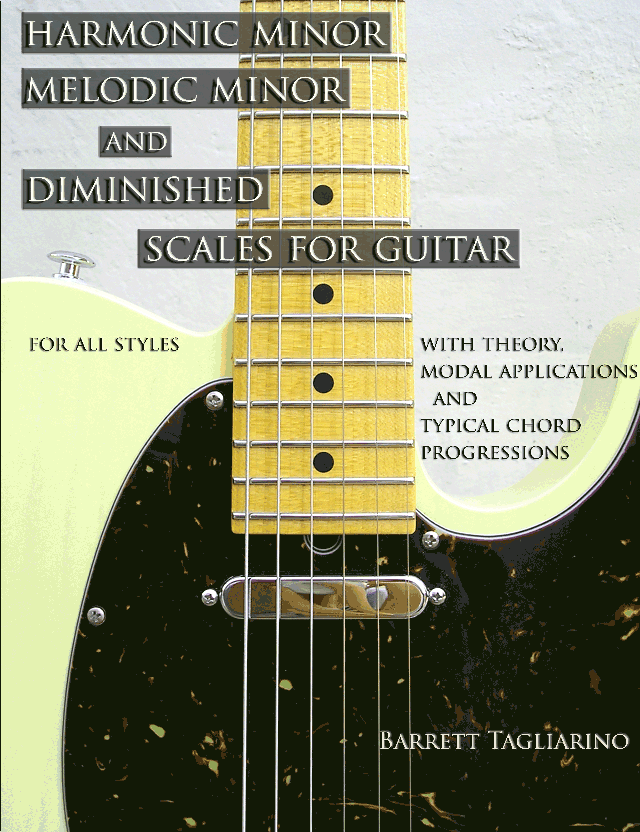 Harmonic Minor, Melodic Minor, and Diminished Scales for Guitar
Harmonic Minor, Melodic Minor, and Diminished Scales for Guitar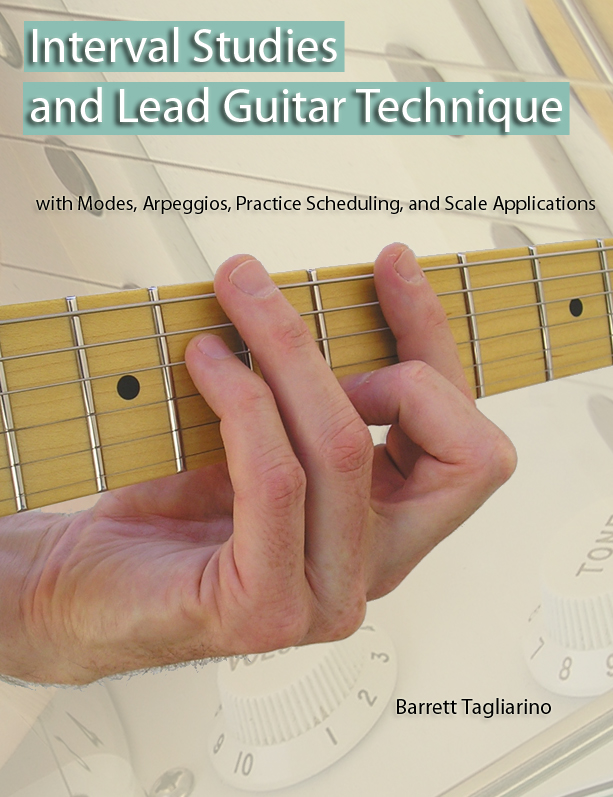 Interval Studies and Lead Guitar Technique.
Interval Studies and Lead Guitar Technique. 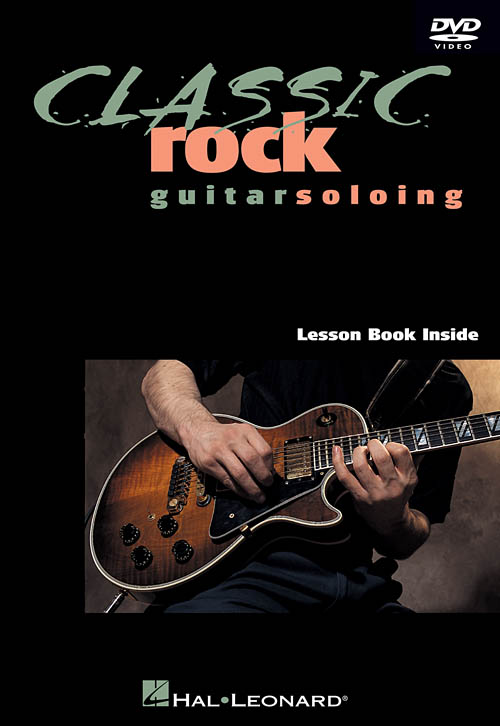 Classic Rock Guitar Soloing
Classic Rock Guitar Soloing